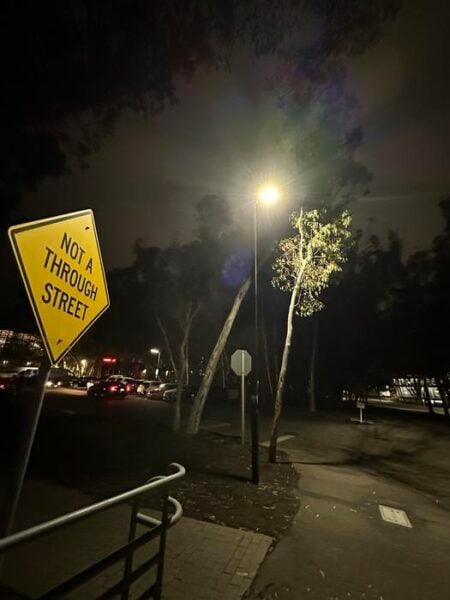Summary: New research from UC San Diego reveals that artificial light severely disrupts honey bees’ sleep patterns, similar to how screen time affects human sleep. The study shows that light pollution could pose a significant threat to bee health and their crucial role in pollinating crops and maintaining ecosystem stability.
Reading time: 6 minutes
Just as scrolling through your phone in bed can disrupt your sleep, artificial light is taking a toll on honey bees’ rest patterns. This discovery raises concerns about the well-being of these essential pollinators in our increasingly illuminated world.
“Our research shows just how sensitive honey bees are to changes in their environment, particularly to something as seemingly benign as artificial light,” said Ashley Kim, the study’s lead researcher at UC San Diego. “By disrupting their circadian rhythms, we see clear evidence of reduced sleep periods. This raises significant concerns, not only for bee health but also for the health of ecosystems that depend on them for pollination.”
When Light Meets Night
The research team conducted extensive experiments over several years, comparing bee behavior under normal darkness with those exposed to continuous artificial light. The results were immediately visible in their 24-hour video recordings.
“Even without analyzing the data you can tell that there was something going on… the bees that were under constant light slept less,” Kim noted.
Bees under constant illumination not only slept less but were more frequently disturbed by their nestmates and sought out darker areas within their experimental environments.
A Growing Global Challenge
The implications of these findings are significant, especially considering that artificial light now covers a quarter of Earth’s surface. This issue becomes more pressing as climate change forces bees to spend more time outside their hives on hot evenings.
“Understanding the factors that affect bee health, such as light pollution, is essential for developing strategies to protect pollinator populations,” explained James Nieh, a professor involved in the study. “Light pollution is a growing issue, with artificial light now covering a quarter of the Earth’s surface, and this research sheds new light on how such disturbances may be harming pollinators.”
Beyond Sleep: Impact on Bee Communication
Sleep disruption affects more than just rest patterns. Bees rely on complex communication methods, including the “waggle dance,” to share information about food sources. Without proper sleep, their ability to perform these crucial dances deteriorates, potentially affecting the entire colony’s survival.
Glossary of Terms
- Circadian Rhythms: Natural internal processes that regulate sleep-wake cycles over 24 hours
- Waggle Dance: A sophisticated communication system bees use to inform others about food locations
- Light Pollution: Excessive or inappropriate artificial light that affects natural patterns
- Urban Beekeeping: The practice of maintaining bee colonies in urban environments
- Pollination Services: The critical role bees play in fertilizing plants and crops
Test Your Knowledge
- Q: What percentage of Earth’s surface is now covered by artificial light?
A: One quarter (25%) - Q: What immediate effect did researchers observe in light-exposed bees?
A: They slept less and were more frequently disturbed - Q: What important bee behavior can be impaired by lack of sleep?
A: The waggle dance communication system - Q: What external factor is causing bees to spend more time outside their hives at night?
A: Climate change and increasing temperatures
Enjoy this story? Get our newsletter! https://scienceblog.substack.com/
If our reporting has informed or inspired you, please consider making a donation. Every contribution, no matter the size, empowers us to continue delivering accurate, engaging, and trustworthy science and medical news. Independent journalism requires time, effort, and resources—your support ensures we can keep uncovering the stories that matter most to you.
Join us in making knowledge accessible and impactful. Thank you for standing with us!

